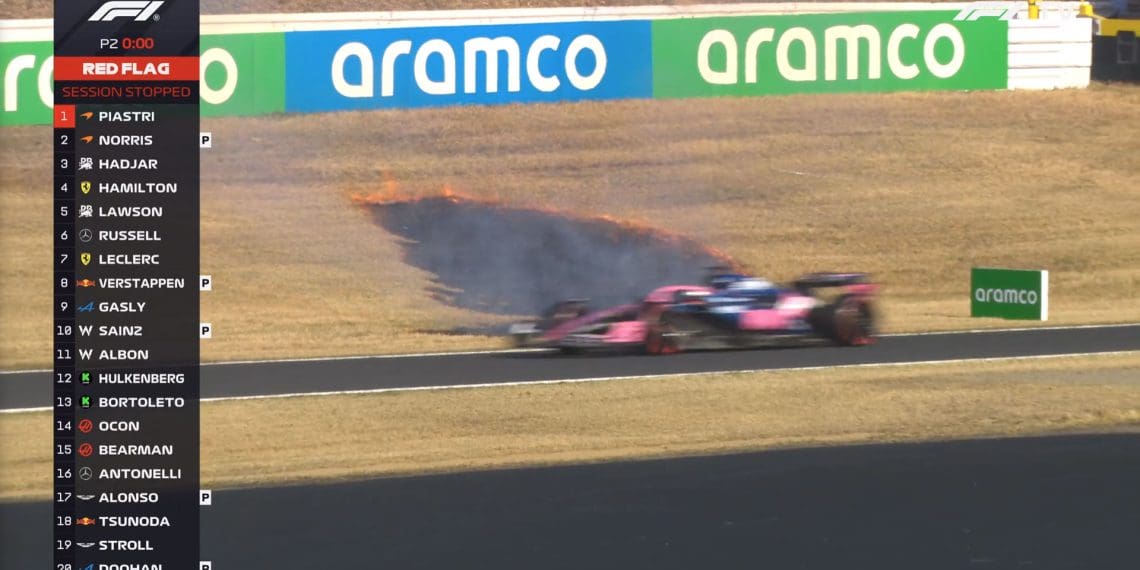The Japanese Grand Prix faced fiery chaos with grass fires erupting during the FP2 session, causing the FIA to swiftly intervene in an attempt to prevent further disruptions. The scorching conditions at Suzuka led to dry grass along the track catching fire from sparks emitted by the F1 cars, resulting in two separate blazes that forced the session to be red-flagged twice.
As flames engulfed the yellowing grass and sent hazy smoke billowing across the circuit, vigilant marshals managed to extinguish the fires before significant damage occurred. The FIA, anticipating ongoing hot and dry weather, unveiled a series of preventative measures to mitigate the risk of similar incidents in the upcoming days.
In a bold move to safeguard against future fires, the FIA spokesperson declared, “The grass has been trimmed to its shortest length, dried grass has been cleared, and designated response teams will be strategically positioned around the track. Additionally, the grass will be moistened before tomorrow’s sessions to further reduce the likelihood of any untoward incidents.”
This is not the first time such a situation has arisen in a Formula 1 race weekend, as a similar occurrence took place at the Chinese Grand Prix the previous year. Investigations were conducted following fires at the Shanghai International Circuit, although the circumstances were not as arid as those witnessed at Suzuka. Despite sparks from the cars being identified as the ignition source, the exact reason for the fires spreading rapidly remained unclear.
A prevailing theory suggested that subterranean gases rising to the surface from the swampy foundation of the Shanghai track could have exacerbated the fires, a scenario unlikely to be replicated at the Suzuka circuit. With safety at the core of their concerns, the FIA is leaving no stone unturned in their quest to ensure a hazard-free remainder of the Japanese Grand Prix weekend.










